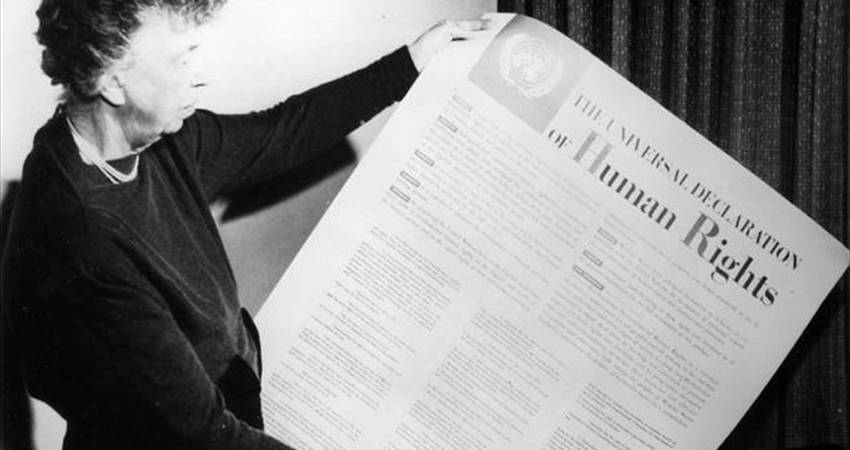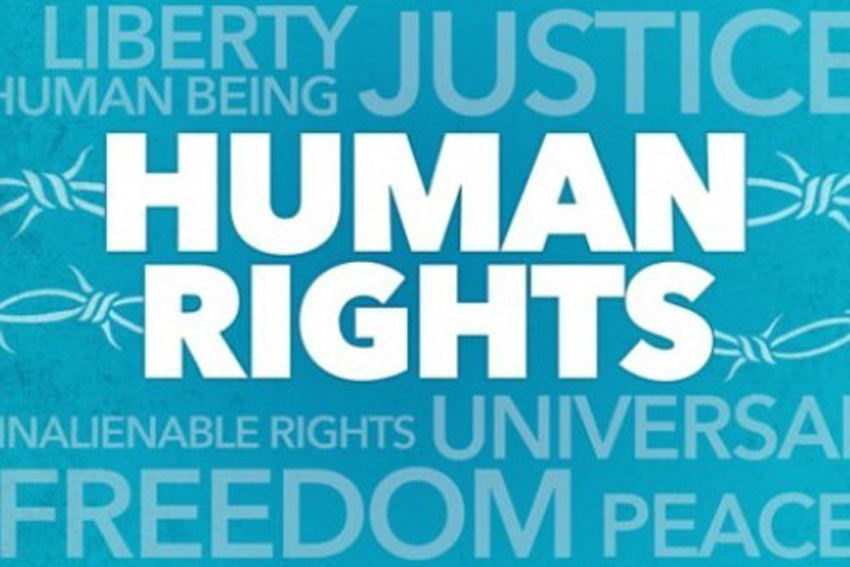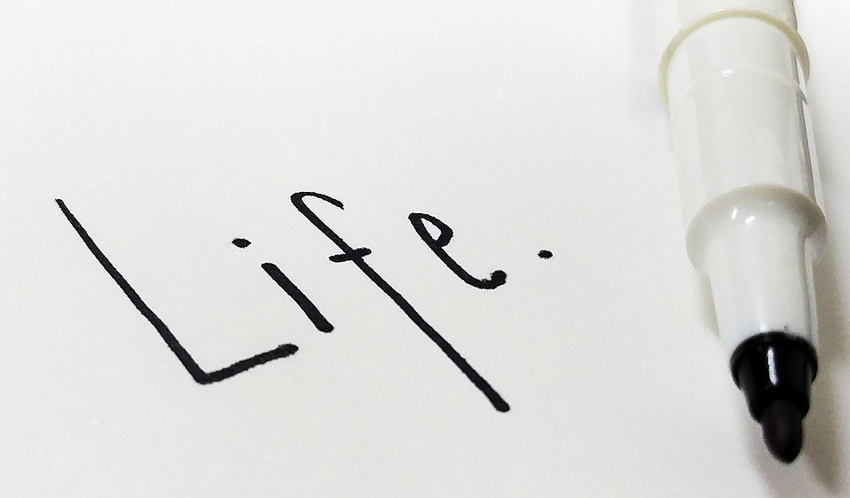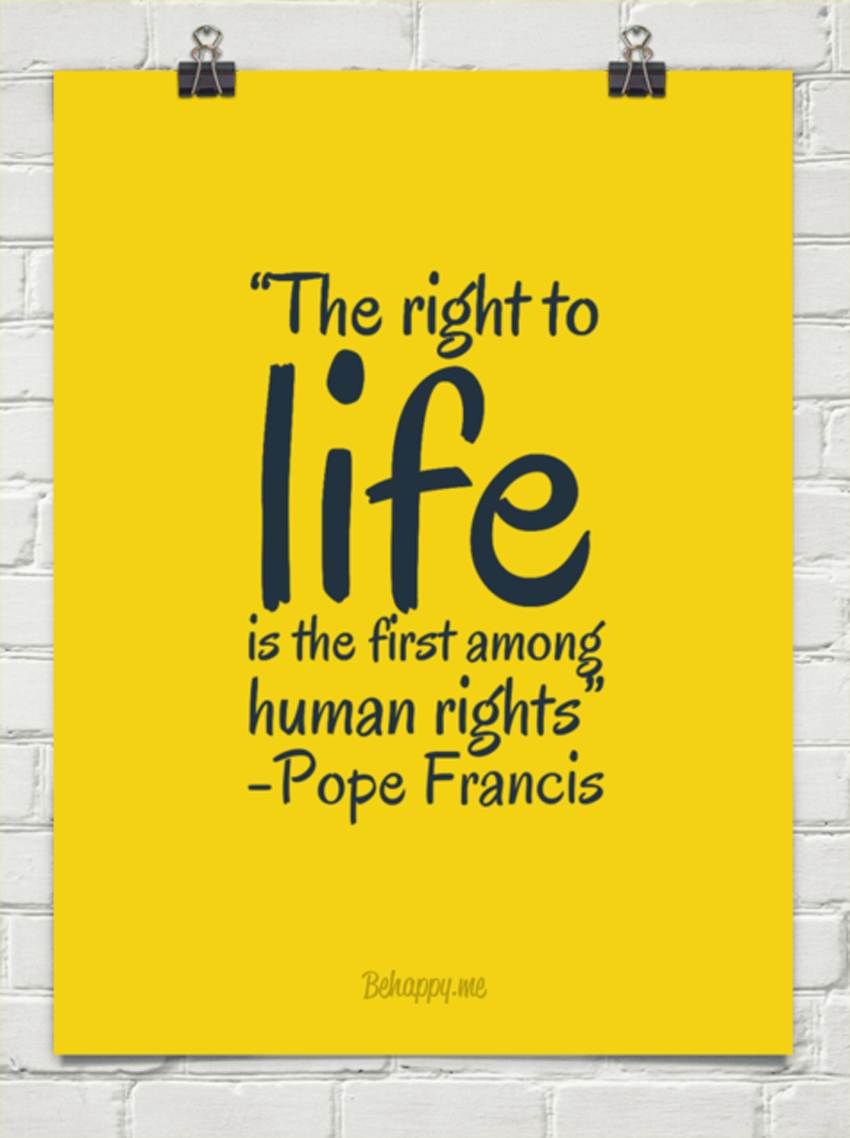
The UN Declaration of Human Rights at 70 – from Shepherd to Wolf?
THE ORIGINS OF RIGHTS
Documents asserting individual rights, such the Magna Carta (1215), the English Bill of Rights (1689), the French Declaration on the Rights of Man and Citizen (1789), and the US Constitution and Bill of Rights (1791) are the written precursors to many of today’s human rights documents. Yet these documents, when originally translated into policy, excluded women, people of color, and members of certain social, religious, economic, and political groups.
Efforts in the 19th century to prohibit the slave trade and to limit the horrors of war are prime examples of rights being invoked to protect dehumanised sub-groups outside of rights treaties.
Concern over the protection of certain minority groups was raised by the League of Nations at the end of the First World War but initial progress floundered due to political inaction and an isolationist policy of the United States.
The idea of human rights emerged stronger after World War II. The extermination by Nazi Germany of over six million Jews, Sinti and Romani (gypsies), homosexuals, and persons with disabilities horrified the world. Again, these were dehumanised sub-groups targeted by States.
This was a seminal moment in time when the world expressly decided that it could no longer accept the treatment of some sub-groups of humanity differently to others after witnessing the horrors of what humanity was capable of doing to itself.
The United Nations was established in 1945 and under the leadership of Eleanor Roosevelt, on December 10, 1948, the Universal Declaration of Human Rights (UDHR) #Anchor-Universal-34498 was adopted by the 56 members of the United Nations.

Its Preamble eloquently asserts that:
‘[R]ecognition of the inherent dignity and of the equal and inalienable rights of all members of the human family is the foundation of freedom, justice, and peace in the world.’
The UDHR was not contrived from a philosophical theory or a conceptual idea but from the harsh realities of human interaction.
With the UDHR came a commitment to the eliminating the age old problem of dehumanisation of sub-groups of society recognising that these rights were universal, inalienable and indivisible for each and every human being and members of all sub-groups. War and brutality were the catalyst, empathy and humanity the driving forces, not concepts, philosophy or theory.
THE RIGHT TO LIFE
The right to life is a based on the belief that a human being has the right to live and, in particular, should not be killed by another human being or by the State. Simple. All other rights are contingent on having this right protected. The right to life is enjoyed through protected civil and political freedoms and, enhanced with social and cultural rights.
However, the concept of a right to life becomes less straightforward in debates on issues of capital punishment, war, abortion, euthanasia, justifiable homicide.
In human history, there has not been a general acceptance of the concept of a right to life that is innate to each individual. Rather it was granted as a privilege by those holding social and political power. For many groups, their lives were expendable and this was often enumerated in law.
However, the UDHR declared in article three:
Everyone has the right to life, liberty and security of person. In 1966, the International Covenant on Civil and Political Rights was adopted by the United Nations General Assembly in Article 6, stating.
Every human being has the inherent right to life. This right shall be protected by law. No one shall be arbitrarily deprived of his life. It is a “supreme right” from which no derogation can be permitted, and must be interpreted widely. It therefore requires parties to take positive measures to reduce infant mortality, and increase life expectancy, as well as forbidding arbitrary killings by security forces.
From the inception of the UDHR and subsequently the ICCPR, and reinforced through additional covenants such as the CRC, CRPD, CEDAW, Convention on Racial Discrimination, the rights and protections of different societal sub-groups (women, children, people with disabilities and racial differences) were emphasised
The Convention on Racial Discrimination and CEDAW strangely enough do not explicitly call out the right to life but state that ‘everyone is entitled to all the rights and freedoms set out therein [the UDHR], without distinction of any kind, in particular as to race, colour or national origin’. – meaning ‘don’t discriminate’.

The UNCRPD in Article 10 is more explicit affirming that: ‘every human being has the inherent right to life and shall take all necessary measures to ensure its effective enjoyment by persons with disabilities on an equal basis with others.’ – meaning don’t exclude people with disabilities.
The UNCRC in Article 6 seeks to emphasise the rights of children, recognizes that every child has the inherent right to life, and in its preamble, goes a step further, stating that ‘the child, by reason of his physical and mental immaturity, needs special safeguards and care, including appropriate legal protection, before as well as after birth’.
Thus, we can see the right to life evolved from a general declaration to more concrete pronouncements of protections for specific sub-groups of the human species over time through the additional covenants that were put in place.
Yet, despite these declarations and international commitments, the right to life remains vulnerable to power and in many places continues to be taken with impunity. We live in an age in which most of the major human rights treaties – there are nine “core” treaties – have been ratified by the vast majority of countries.
It seems that in practice the right to life agenda has fallen on hard times. In much of the Islamic world, women lack equality and can be stoned to death, religious dissenters are persecuted and killed. Russia cites the rights of ethnic minorities in Ukraine in order to justify military intervention there, just as the United States cited Saddam Hussein’s suppression of human rights in order to build support for the Iraq war- all resulting in a loss of innocent life.
State building and police power, as well as international politics, continue to trump the right to life.
But there is no doubt progress has been made, as egregious life-taking is subject to the scrutiny of international human rights observation (by individuals if not States) particularly since the end of the Cold War.
This progress has included a deeper, wider and broader elaboration of the ICCPR’s right to life in its general comments- and this is not necessarily a good thing. In 1982, General Comment 6, the HRC stated ‘the Committee has noted that the right to life has been too often narrowly interpreted. The expression “inherent right to life” cannot properly be understood in a restrictive manner, and the protection of this right requires that States adopt positive measures.’

No longer is the right to life a freedom or negative right but one that must be actively promoted and enhanced by the State.
In 1984, under General Comment 14, the potential threat to life was used as justification to call on States to eliminate the menace of nuclear war. Even threats or risks fall under the State’s positive obligations.
In 2017, the UN Human Rights Committee drafted General Comment 36, a much more elaborate and detailed look at the right to life confirming that ‘It is most precious for its own sake as a right that inheres in every human being, but it also constitutes a fundamental right, whose effective protection is the prerequisite for the enjoyment of all other human rights and whose content can be informed and infused by other human rights.’
Particularly interesting is both the unprecedented length of the comment but also the extension of the interpretation of the right to life, moving from viewing it as primarily a negative right that the individual is entitled to against the State, to one that looks to increase the reach of the State, empowering the State to assert significant social controls to protect life- seeing the wolf now as the shepherd.
The comment suggests the extension of the responsibilities of States such that they: ‘must also exercise due diligence to protect the lives of individuals against deprivations caused by persons or entities, whose conduct is not attributable to the State’ and even to the extent that ‘States parties may be in violation of article 6 even if such threats have not actually resulted in loss of life’.
It also, contrarily, requires that – ‘States should take adequate measures, without violating their other Covenant obligations, to prevent suicides, especially among individuals in particularly vulnerable situations’. while also stating that States should not be interfering with assisted suicide.
The right to life is interpreted as requiring the State to control private actors and individuals, including monitoring in a seemingly Orwellian manner by: ‘rigorously limit[ing] the powers afforded to private actors, and provide strict and effective measures of monitoring and control in order to ensure, inter alia, that the powers granted are not misused, and do not lead to arbitrary deprivations of life.’
Incredibly the extension of the right to life is viewed a requirement ‘to protect life from all foreseeable threats, including from threats emanating from private persons and entities’
How practically would a State do this without resorting to totalitarianism?
It even seeks to define the criminal code to ‘include effective criminal prohibitions on all forms of arbitrary deprivations of life by individuals, including intentional and negligent homicide, disproportionate use of firearms, infanticide, “honour” killings, lynching, violent hate crimes, blood feuds, death threats, terrorist attacks and other manifestations of violence or incitement to violence that are likely to result in a deprivation of life.’
The right to life is interpreted as giving SPECIAL protection to those ‘placed at particular risk because of specific threats or pre-existing patterns of violence. These include human rights defenders, journalists, prominent public figures, witnesses to crime and victims of domestic violence. They may also include street children, members of ethnic and religious minorities and indigenous peoples, displaced persons, LGBTI persons, persons with albinism, alleged witches, asylum seekers, refugees and stateless persons … women and children’ suggesting a hi-jacking by interest groups and changing the right to life from universal to particular.

Article 30 of the general comment further reaches into the sphere of social control stating: ‘The duty to protect life also implies that States parties should take appropriate measures to address the general conditions in society … high levels of criminal and gun violence, pervasive traffic and industrial accidents, pollution of the environment, the prevalence of life threatening diseases, such as AIDS or malaria, extensive substance abuse, widespread hunger and malnutrition and extreme poverty and homelessness.’
The State ought to become paternalistically responsible and ultimately controlling under the name of rights.
The right is also interpreted as determining the socio-economic framework that States ought to put in place: ‘to ensure access by individuals to essential goods and services such as food, water, shelter, health-care, electricity and sanitation … ‘ The right to life is considered to also mean fighting stigma against STIs and prohibiting war propaganda.
While we may all agree with the usefulness and righteousness of these aims, such an extension risks giving truth to Bentham’s claim that rights are little more than ‘nonsense upon stilts’, dragging the language and ‘rights’ into the sphere that ought to be considered the space for civic discourse.
The special position of human rights is dragged downwards to become almost meaningless, when everything becomes a human right, nothing is a human right. Extra-judicial killing by the State is lumped with fist-fights among friends as rights violations.
It is clear that the right has moved, in the eyes of the Human Rights Committee, from dealing with the reality of the brutality of man, States and power, to a form of societal design which risks inhibiting freedom as well as political and civic engagement.
A last and most interesting point, which leads to the final part of this discussion is that the draft General Comment 36 also attempts to decide that some human beings have a right to life and that others do not, namely the unborn child.
Though various committee bodies have attempted to create a frame toward a right to abortion- thus creating a hierarchy of rights holders – the General Comment is the first time this has been attempted in a generalised manner- working toward at least a customary interpretation of rights as applying only to the born, while ignoring – and contradicting- the UN CRCs invocation of protection needed for the unborn child before birth.
Of course this is not a new story nor a new debate and will be discussed in more detail below.
We are dealing with two boiling frogs, where gradually the right to life has transformed from its original noble origins into something its founders would probably not recognise.
The first frog is described above where the protection of the right to life from the State (or the majority) has evolved into the right of the State to inhibit liberties and to manufacture a social construct that seeks to guarantee rights- which is a worrying and disconcerting over-reach- especially considering the many governments around the world.
One can only imagine Kim Jong Un accepting the expectation of the HRC to take pre-emptory action to minimise any possible risk to the fullest possible enjoyment of the right to life of his citizens, which he will claim he is merely seeking to ensure, as required by the HRC’s General Comment 36.
PERSONHOOD
The second boiling frog has been the desire to provide a theoretical or philosophical underpinning to the reality of human rights and why they ought to exist for human beings qua human- rather than their original genesis as a protection for human beings from the State and the tyranny of the mob.
This theoretical exercise comes from the ‘recognition of the inherent dignity’ of each human which is expressed in the preamble to the UDHR and repeated in the various covenants and conventions and is an academic exercise to determine what is this ephemeral dignity that we are all endowed with. However, this exercise is not benign.
What is this elusive ‘human dignity’ that is talked of?
Human dignity is described by the Vatican’s PONTIFICAL COUNCIL FOR THE FAMILY on THE FAMILY AND HUMAN RIGHTS ‘as a reality that emanates from man’s essence, i.e., from his nature. Therefore, this is a reflection of the substantial and spiritual reality of the human person and not a creation of the human will, a concession by public authorities, or a product of cultures or historical circumstances. ‘
The Vatican claims that ‘every person is entitled to rights at every stage of his/her development and at every moment of his/her existence.’
But the philosophical (rather than the theological) reasoning looks at dignity differently.
One of the most recent theorists, Griffin, in On Human Rights, seeking a substantive determination of rights, felt that an ‘adumbration of that exceedingly vague term human dignity … as a grounds for human rights’, was necessary, believing that human rights were ‘nearly criterionless’ without this greater definition.
Like many others via many different analyses, he has arrived at the narrative of personhood or agency as giving substance to human rights. And this language of personhood has taken hold in the narrative of human rights, I argue, to a detrimental effect.
The language of the person, with a person described as one who has agency – or personhood- creates yet another differentiation between members of the human family. No longer are we divided by race, religion, sex, colour etc, but differentiated by agency.
And the problem with the lens of personhood, is that it is derived from a narrative of human rights. So, when one speaks of human rights, one is directed along the path of personhood, attributing in a circular manner, the protection and promotion of human rights, to the human person, the human being with agency and autonomy- and alternatively, placing the human beings without agency and autonomy outside of the protection of human rights.
Personhood, agency, autonomy are not defined characteristics. They do not have a beginning and an end. Some human beings have greater agency and autonomy, thus greater personhood than another.
Theorists have attempted to address this problem by creating circular arguments to define a threshold of agency or a threshold of personhood that endows a human being with the protection of rights but every argument falls on its own circularity and descends into arbitrariness.
Defining human rights via personhood creates a new paradigm of human being. Rather than being differentiated by race or sex, the defining characteristic becomes personhood. Thus we have weaponised human rights in a manner that turns the UDHR and the right to life on itself.
With this weaponisation organisations such as Amnesty and the UN HRC itself use the narrative of human rights to argue that the protection of human rights no longer exists at the periphery of human persons or those that fall out it.
While the logic of personhood has been exposed, and mis-used, by Peter Singer in his claims that rabbits ought to have as much rights as infants, he brings it to its natural conclusion.
The right to life under the UDHR at 70 has turned on itself, becoming a weapon to remove rights from those at the very margins of life, rather than a defence from the arbitrary deprivation of life and barbaric treatment of those at the margins of society as occurred at the start of the 20th century.
The narrative of personhood has given legitimacy to statements such as that in draft comment 36 on the Right to Life whereby the HRC can say with one side of its face that:
‘States parties should be guided by the best interests of the child, by the need to ensure the survival and development of all children, and their well-being’ and with the other that
‘States parties may not regulate pregnancy or abortion in a manner that runs contrary to their duty to ensure that women do not have to undertake unsafe abortions’ while also ignoring the CRC requirement of special protection of the child before and after birth.
At the beginning of this paper, I highlighted that many of the early rights documents, when originally translated into policy, excluded women, people of colour, and members of certain social, religious, economic, and political groups. Now the UDHR itself is following suit, using its own assumed legitimacy through the HRC and its expert advisory body of 18 nominees from exemplary countries of human rights protections such as China, Russia and Saudi Arabia, to exclude a different sub-group from their protection.
The idea of personhood creates a new paradigm of human being- that human with the most agency being the most human- and the evolution of rights has resulted in the weaponisation of this noble humanitarian framework in the latter years of its 70 year history which has become a wolf in sheep’s clothing.
This paper was presented on the 22nd of June 2018 at the Maynooth University Conference on: ‘The Universal Declaration of Human Rights at Seventy; A Review of Successes and Challenges’
Dualta Roughneen is a writer and researcher
Featured
- RTÉ Investigates turns a blind eye to 38,000 babies aborted and other grim realities
- After Limerick case, medics write to every TD to warn ultrasounds must be provided before abortion
- Irish MEPs join EU lawmakers in voting to enshrine abortion as a fundamental right
- Every TD and Senator contacted re Limerick abortion scandal
- Stop the Cover-Up or Women Will Die
- "A testament to society's failure": 7681 abortions carried out in North of Ireland since 2020
- The west cannot take ‘human dignity’ for granted
- Horror in Prague: A hospital aborted the baby of the wrong mother
- Why are the media ignoring the abortion scandal that almost killed a woman?
- Limerick: woman who was prescribed abortion pills had life-threatening ectopic pregnancy
- Rally for Life 2024
- Exposing the Numbers
- Alive and Kicking: Your baby before 12 weeks


























